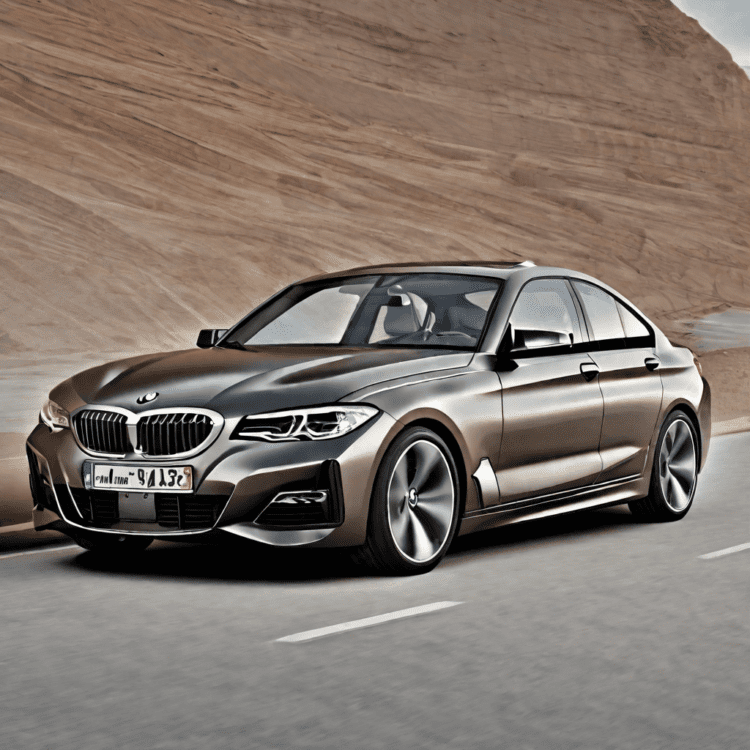Having the correct tire pressure is crucial for safe driving and prolonging the life of your tires. This is especially important for performance vehicles like BMWs, which require inflation levels specific to the model and driving conditions.
In this comprehensive guide, we will cover everything you need to know about BMW tire pressure – from checking and adjusting pressure to troubleshooting issues and maintenance tips.
The Importance of Proper Tire Pressure for BMWs
Maintaining the manufacturer-recommended tire pressure is vital for your BMW for the following reasons:
- Prevents uneven tire wear: Correct inflation allows the tire tread to wear evenly. Underinflated tires will wear more on the outer edges, while overinflated tires wear in the center.
- Optimizes fuel economy: Underinflated tires create more rolling resistance which reduces gas mileage. Keeping tires properly inflated can improve fuel economy by up to 3%.
- Enhances handling and braking: Tires at the proper pressure have better traction and grip, providing better acceleration, cornering, and braking. This is especially important for BMW’s high-performance driving dynamics.
- Avoids blowouts and other failures: Extreme underinflation leads to excessive heat buildup in the tires, increasing the chances of blowouts and tread separation. It also causes wheels to bend and tires to separate from the rim.
- Triggers warning lights: BMWs have a Tire Pressure Monitoring System (TPMS) which will activate a warning light on your dashboard if pressure drops 25% below the recommended level.
Clearly, maintaining the correct tire pressure is vital for safe driving and maximum performance. But how do you know what the proper inflation level is? Read on to find out.


Checking Tire Pressure on Your BMW
BMW recommends checking your tire pressure at least once a month when tires are cold. Here are the steps to accurately measure tire pressure:
1. Use an Accurate Tire Pressure Gauge
Invest in a high-quality digital or dial pressure gauge that is easy to read and precise. The gauge should have an accuracy of +/- 1 psi.
- Avoid cheap pencil gauges which can be very inaccurate.
- Make sure the gauge has a straight-on connector to get a tight seal on the valve stem.
2. Check When Tires are Cold
Only measure pressure when the tires have not been driven for 3 hours or more. Driving heats up the tires, increasing pressure.
- The cold inflation pressure listed on the tire sidewall and driver’s door jamb is correct.
- If tires are warm, expect pressures to be 4-6 psi higher than cold. Do not bleed warm tires as they will be underinflated when cool.
3. Remove Tire Valve Caps
Unscrew the valve caps completely before connecting the gauge. This provides a direct pathway to get an accurate reading.
4. Connect Gauge and Measure
Press the gauge straight onto the valve stem and hold it tightly. The pressure will display on the gauge once the seal is tight.
- Note the individual readings for each tire – don’t just look at the average.
- Check the pressure with tires on level ground. Slope changes can alter the reading.
5. Re-check if Needed
If a measurement seems significantly low or high, bleed or add a small amount of air and re-check to verify. Valve stems can stick, providing an incorrect reading.
6. Replace Valve Caps
Screw the caps back on tightly by hand after removing the gauge. This prevents dirt from entering the valve stem.
Following this process will ensure you get precise cold pressure readings for each tire on your BMW.


Adjusting Tire Pressure on Your BMW
Once you’ve checked the actual tire pressures, you need to determine if they need adjustment:
- Locate the recommended pressures – Check the tire information label on the driver’s door jamb. This lists the OEM pressures by tire size and is the primary reference. Also, check the tire sidewall for the maximum cold pressure molded into it.
- Compare readings to recommendations – If the measured pressures differ by more than 2 psi from the recommended, adjustment is needed.
- Determine underinflation or overinflation – If the pressures are lower than recommended, the tire needs more air. If significantly higher, the tire needs to be bled.
- Adjust in small increments – Only add or bleed 2-4 psi at a time, then recheck. Going in big increments risks overshooting the target.
- Aim for upper limit if unsure – Remaining on the higher side of the recommended range is safer than underinflating. Low pressure is more hazardous.
- Re-check when done – Inflate all tires equally, then measure again to confirm they match recommendations. The TPMS may need resetting afterward.
- Repeat for load or speed changes – Alter pressure if switching from solo to fully loaded driving, or high-speed driving like on a track day.
Checking Your BMW’s Tire Pressures
Follow these steps to measure and adjust the pressures on your BMW tires:
- Use an accurate tire pressure gauge.
- Check tires when they are cold – avoid them after driving.
- Remove valve caps completely.
- Connect the gauge straight and get a tight seal.
- Note the pressure reading for each tire.
- Re-check if readings seem incorrect.
- Replace valve caps after finished.


Adjusting Your BMW’s Tire Pressures
To correctly inflate your BMW’s tires:
- Locate recommended pressures on the door jamb.
- Compare measured pressures – adjust if over 2 psi difference.
- Determine if tires are under or overinflated.
- Add or bleed just 2-4 psi at a time.
- Inflate toward the upper limit of the range if unsure.
- Re-check all pressures when done.
- Adjust pressure for load or speed changes.
BMW Tire Pressure Monitoring System (TPMS)
Modern BMWs come equipped with an advanced Tire Pressure Monitoring System (TPMS) to alert drivers of underinflation:
- Sensors mounted inside each wheel continuously track inflation.
- The dashboard warning light illuminates if any tire drops 25% below the recommended pressure.
- Low-pressure value displayed for an individual tire in the instrument panel.
- Can recalibrate itself to compensate for temperature fluctuations.
- Transmits pressure data via wireless signals to the vehicle computer module.
- Clears warning light once tires inflated to proper levels.
The TPMS provides an early warning of low inflation to avoid safety hazards. It is not a substitute for manually checking pressures with a gauge each month.
BMW Tire Pressure Recommendations for Different Driving
BMW provides tire pressure guidelines tailored to various driving conditions your vehicle may encounter:
BMW Tire Pressure for Highway Driving
- Maintain the PSI listed on the driver’s door jamb label.
- Do not exceed the maximum pressure molded into the tire sidewall.
- Highway driving generates high heat at sustained speeds above 50 mph.
BMW Tire Pressure for City Driving
- Inflate to the recommended pressure on the door jamb.
- Can go to higher pressures within the sidewall limit.
- Lower city speeds mean less heat buildup.
BMW Tire Pressure for Winter Driving
- Increase pressure by 4-6 PSI over standard pressures.
- Does not need to exceed maximum tire sidewall pressure.
- The extra pressure compensates for heat loss in cold weather.
BMW Tire Pressure for Off-Road Driving
- Reduce pressure by 20% from highway/city driving pressures.
- Do not let pressures drop lower than 20 PSI.
- Softer inflation allows better compliance over uneven terrain.
BMW Tire Pressure for Towing or Heavy Loads
- Add 10 PSI to the rear tires if hauling heavy cargo or a trailer.
- Ensures adequate load bearing and prevents overheating.
- Do not go beyond maximum pressure molded into the tire sidewall.


How to Choose the Right Tires for Your BMW
Choosing the ideal tires for your BMW model and driving needs will optimize performance and handling. Here are expert tips on selecting replacement tires:
How to Choose BMW Tires
- Stick with original equipment size, load index, and speed rating for proper fit.
- Softer performance tires improve grip, while hard tires prioritize tread life.
- Low-profile tires enhance handling, while higher sidewalls improve comfort.
- All-season tires are good for year-round driving in most regions.
- Summer tires provide the best warm-weather grip without studying for snow.
Types of BMW Tires
Summer High-Performance Tires
- Offer superior dry and wet grip.
- Made from ultra-soft rubber compounds.
- Not intended for near-freezing temperatures.
All-Season Tires
- Balance decent traction in all conditions.
- Hardest rubber for long tread life.
- Can be used year-round except in snow.
Winter / Snow Tires
- Have aggressive open tread patterns and special rubber for snow traction.
- Softer rubber also provides great cold-weather handling.
- Primarily used during winter months.
Best BMW Tires for Conditions
Dry Roads: Summer performance or grand touring all-season tires
Rain: All-season or summer tires with ample tread depth
Cold Weather: All-season or winter tires with snow rating
Summer Heat: Maximum-performance summer tires
Snow/Ice: Winter tires for traction and safety
Extending the Life of Your BMW Tires
You can maximize the lifespan of your BMW’s tires through proper inflation, alignment, rotation, storage, and driving habits:
Tips to Extend Tire Life
- Maintain correct inflation pressure at all times.
- Get wheel alignments done regularly to reduce uneven treadwear.
- Rotate tires every 6,000-8,000 miles to even out wear.
- Store unmounted tires away from heat, moisture, and ozone.
- Avoid fast starts, hard cornering, and hitting curbs to limit tire damage.
- Check tires frequently for cuts, bulges, cracks, or punctures.
- Drive at moderate speeds and avoid potholes or debris in the road.
- Limit vehicle load to avoid overloading tires.
Proper tire and vehicle care can potentially double the lifespan of your BMW’s tires. It’s worth the extra maintenance time and cost.


Common BMW Tire Problems and Troubleshooting
Even with good care, BMW tires may occasionally suffer from some typical issues. Here are the most common problems and how to diagnose the causes:
Vibration – Wheel imbalance, loose lugs, bent rim, separation, or flat spotting. Check balance and torque.
Noise – Low pressure, uneven wear, stiff ride, bad bearings or struts, or improper installation. Ensure good inflation, alignment, and mounting.
Pulling – Uneven treadwear from bad alignment or suspension. The vehicle drifts left or right. Have alignment inspected?
Overheating – Underinflation, wrong speed rating, or defective components causing brake drag. Maintain pressures and verify speed rating.
Slow Leak – Punctures from debris, cracked sidewall or tread, leaking valve stem or rim bead. Identify the source of the leak and plug, patch, or seal.
Irregular Wear – Bad alignment, worn suspension, improper inflation, or tire rotation. Address underlying wear causes.
BMW Tire Warranty Information and Replacement Tips
Understanding BMW tire warranties and how to get the most from new tires will save you money:
BMW Tire Warranty Facts
- Full tread life coverage for defects in materials or workmanship.
- Prorated warranty after first 2/32″ wear down to final 5/32″ tread depth.
- No coverage for damage from improper use, wear, or maintenance.
- Save receipts for proof of proper servicing.
- See BMW dealer for full details and claim filing.
BMW Tire Replacement Best Practices
- Replace in sets of two at minimum, ideally all four for best performance.
- Install the same size as OEM tires unless upgrading.
- Rotate existing tires to the rear for all-wheel drive vehicles.
- Have the BMW dealer shave any uneven wear on old tires before installing new ones.
- Align wheels and reset TPMS sensors after new tires are installed.
- Break in new tires slowly for the first 100 miles.
Following the above advice will maximize the value of your BMW tire purchase or warranty claim.
BMW Tire Maintenance Tips and Finding a Good Tire Shop
Proper tire maintenance and choosing the right tire shop ensures your BMW’s tires last their full lifespan:
BMW Tire Maintenance Tips
- Check inflation pressure and tread depth monthly.
- Have wheels aligned every 6 months or 6,000 miles.
- Rotate tires with each oil change or 6,000 miles.
- Wash tires when washing the vehicle.
- Inspect for signs of uneven or abnormal wear.
- Avoid potholes, curbs, and debris which can damage tires.
How to Find a Good BMW Tire Shop
- Ask the BMW dealership for their recommended tire shops.
- Select a shop that specializes in import/performance vehicles.
- Verify technicians are ASE or TIA certified.
- Check shop has good ratings on Google Maps and Yelp.
- Ask if they offer free tire inspections and alignment checks.
- Find out if they provide tire storage for off-season wheel sets.
Doing some research will help you pick the right tire shop to properly care for your high-performance BMW tires.
Advanced BMW Tire Pressure Topics
Here are some bonus tire pressure tips for specific BMW models and driving scenarios:
BMW Tire Pressure for Track Driving
- Increase front tires by 2-3 PSI over recommended pressures.
- Raise rear tire pressures by 6-8 PSI to cope with higher speeds and cornering forces.
- Monitor pressures between sessions as track heat can increase inflation.
Tire Pressure for New vs Used BMW Tires
- Break-in new tires at standard inflation for the first 100 miles.
- Increase by 2 PSI after break-in for optimal grip on new tires.
- Used tires with some wear require slightly lower pressures.
Signs Your BMW Tires Are Under or Overinflated
Underinflated: Excessive sidewall flex, uneven treadwear, poor handling
Overinflated: Harsh ride, traction loss, uneven center wear
What to Do if BMW TPMS Light is On
- Check all pressures manually with a quality gauge.
- Inflate any underinflated tires to door jamb specs.
- Drive for a few miles to allow TPMS to recalibrate.
- If the light stays on, have the BMW dealer check the sensors.
How to Save Money on BMW Tires
- Extend tire life through proper rotations and maintenance.
- Shop end-of-season sales for the best deals on new tires.
- Consider reputable used tires to lower upfront costs.
- Check BMW forums for coupons and rebates on tires.
Conclusion: Properly Maintaining Your BMW’s Tire Pressure
Checking and adjusting your BMW’s tire pressures correctly is vital for safety, performance, and maximizing the lifespan of your tires. Invest in an accurate gauge, learn the optimal inflation ranges, and check pressures monthly. Keeping your BMW’s tires in their best condition provides big dividends in enhanced driving dynamics, handling, and safety.
FAQ:
Q: What is the correct tire pressure for my BMW?
A: Check the driver’s door jamb for the recommended tire pressure range specific to your BMW model and tire size. This is the primary reference for proper inflation. Inflate your BMW’s tires to the middle of the range for optimal performance, handling, and safety.
Q: How often should I check my BMW’s tire pressure?
A: Check your BMW’s tire pressures once a month or any time before long trips. Also, consider checking tire pressure after extreme temperature changes.
Q: How do I know if my BMW tire pressure is low?
A: The tire pressure monitoring system (TPMS) light will illuminate your dashboard if the pressure in any tire drops 25% below the recommended level. You can also manually check pressures monthly with an accurate gauge.
Q: Why does BMW tire pressure increase after driving?
A: Driving heats up the tires through friction with the road, increasing the air pressure inside the tires. Only measure cold tire pressures before driving or let the car sit for 3 hours after driving.
Q: How do I add air to my BMW tires?
A: Use a high-quality air compressor with an accurate pressure gauge. Remove the valve caps and press the compressor head straight onto the valve stem. Inflate to the recommended pressure, checking often to avoid overfilling.
Q: Can I use a different size tire than my BMW came with?
A: It is not recommended as it will alter important dimensions like overall diameter and speedometer accuracy. Only use the same factory-size tires or consult BMW before switching.
Q: What psi should I inflate my BMW tires to for track driving?
A: Increase front tires by 2-3 psi over normal pressures, and rear tires by 6-8 psi to handle the higher cornering forces and heat of track driving. Do not exceed the tire sidewall maximum pressure.
Q: How tight should BMW wheel lugs be torqued?
A: All BMW wheels should have the lugs torqued to 103 lb-ft or 140 Nm. Use a quality calibrated torque wrench to achieve proper tightness.
Q: How long should my BMW’s tires last?
A: Properly maintained tires on a BMW should last around 30,000-40,000 miles depending on factors like temperature, storage, and driving style. You can maximize lifespan through proper inflation, alignment, rotation, and avoiding impacts.
Q: What is the best way to maintain my BMW tires?
A: Check inflation pressures and tread depth monthly. Rotate tires every 6,000 miles. Have alignment done every 6 months or 6,000 miles. Store tires properly when not mounted. Avoid potholes, curbs, and debris. Have tires balanced every 12,000 miles and replaced when they reach 3/32″ of remaining tread depth. Following these steps will help keep your BMW’s tires in good condition.
Keeping your BMW’s tires in good condition is essential to the overall performance and drivability of the vehicle. Regularly maintaining your car’s tires helps ensure a safe, comfortable ride for you and your passengers. This can be done by checking tire pressure, tread depth, and alignment regularly, rotating the tires every 6,000 miles (or as recommended by the vehicle manufacturer), storing them properly when not in use, avoiding impacts such as potholes and debris on the road, having them balanced periodically, and replacing them when they reach 3/32″ of remaining tread depth. With these steps, you can rest assured that your BMW’s tires are in the best condition possible. Thanks for visiting Tires World Zone! We hope this information was helpful and happy driving!
If you have any questions or need assistance with finding the right tire for your vehicle, our team of experts is here to help. Give us a call or visit us online and we can help you find the right tire for your BMW. We look forward to helping you get the most out of your tires!
Nosotros también hablamos español, ¡llámanos hoy para más información!




